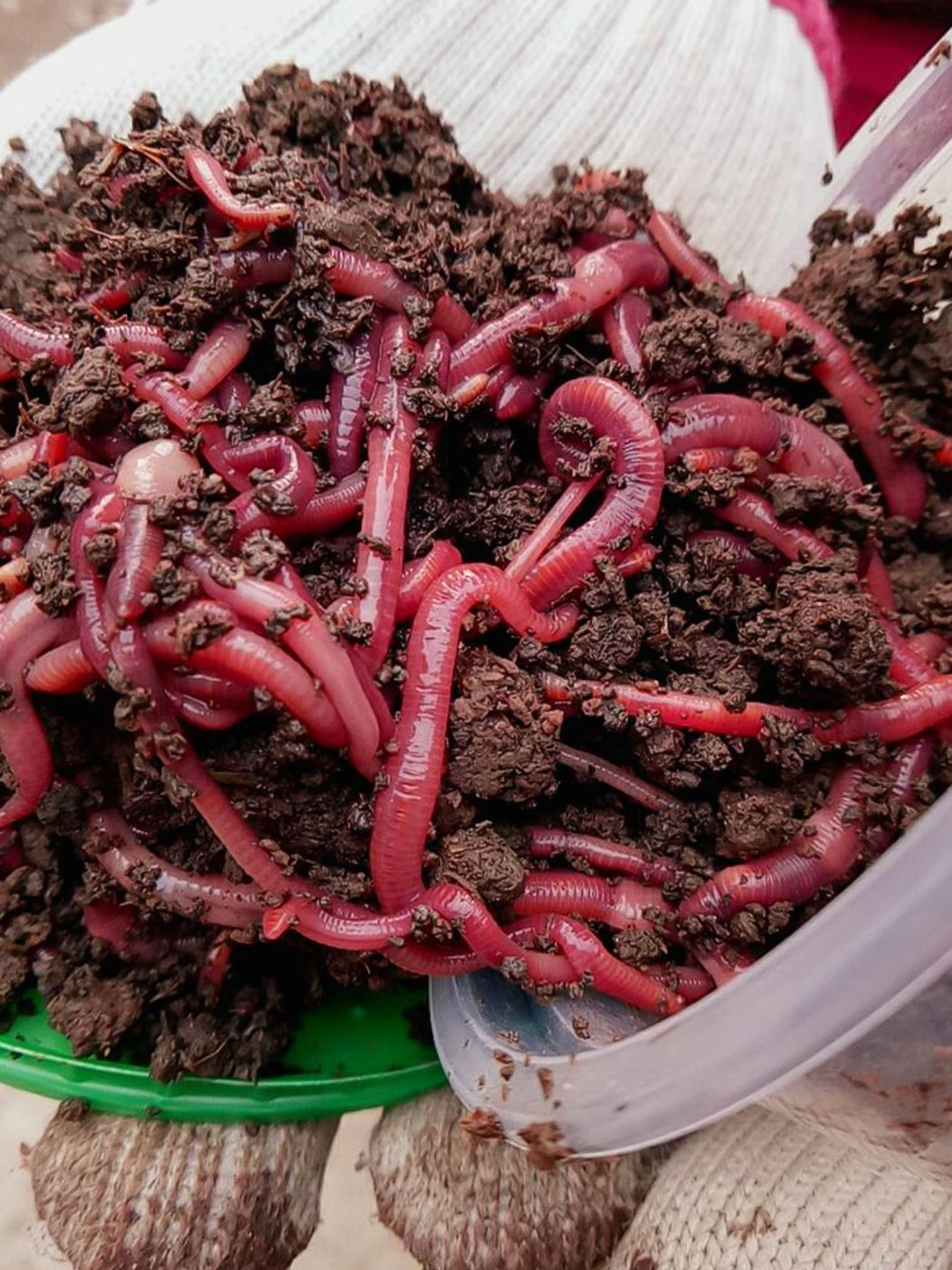The Incredible Globe of Red Wigglers: Boost Your Dirt Fertility Today
These little yet efficient organisms change natural waste into beneficial worm castings, dramatically improving soil wellness and promoting sustainable techniques. As we explore the benefits of vermicomposting and the sensible steps to produce a reliable worm container, the prospective influence of these worms on your horticulture success comes to be increasingly obvious.
Recognizing Red Wigglers
Red wigglers, scientifically known as Eisenia fetida, are a varieties of earthworm that play a vital duty in enhancing soil fertility. These worms flourish in organic-rich atmospheres, such as compost heap and decaying plant material, where they take in natural waste and eliminate nutrient-dense spreadings. Their unique anatomy, featuring a segmented body and a clitellum, enables them to replicate quickly and effectively procedure huge quantities of raw material.

The environmental importance of red wigglers extends past simple waste processing; they contribute to the dirt food web, cultivating a varied community of microorganisms that better improve soil wellness. Comprehending the biology and actions of red wigglers is essential for using their full potential in lasting agriculture and horticulture practices.
Advantages of Vermicomposting
(Red Wiggler Express)Using the power of red wigglers with vermicomposting deals many advantages that considerably boost soil health and wellness and fertility. Among the main benefits is the production of nutrient-rich worm castings, which are a superb natural fertilizer. Red Wiggler Express. These spreadings consist of essential nutrients like nitrogen, phosphorus, and potassium, promoting robust plant development and boosting crop returns
The presence of worm castings improves dirt texture, allowing for better water retention and drainage. Red wigglers help break down organic matter, speeding up decay and reusing nutrients back into the soil.
Vermicomposting likewise cultivates microbial task, which is essential for a healthy and balanced soil community. Beneficial bacteria grow in the visibility of worm spreadings, helping in the malfunction of organic materials and enhancing nutrient availability to plants.
Lastly, vermicomposting works as a reliable waste monitoring option, minimizing garbage dump waste by recycling kitchen scraps and other natural products. This not only adds to ecological sustainability yet likewise promotes a round economic situation within horticulture and agriculture.
How to Establish a Worm Container
Establishing a worm container is an uncomplicated process that can significantly boost your composting initiatives. Begin by selecting an appropriate container, which can vary from a commercially readily available worm bin to a simple plastic or wood box (Red Wiggler Express). Make sure the container has adequate air flow; little openings in the lid and sides will certainly help with air circulation
Following, create a bed linen layer to offer a comfy environment for the red wigglers. This can be made from shredded paper, cardboard, or coconut coir, moistened to a wet, sponge-like consistency. Load the bin to about one-third full with this bedding material.
As soon as the bed linens is prepared, it's time to present the worms. Red wigglers flourish in natural waste, so location them delicately onto the bedding. Cover the worms with a light layer of added bedding to assist them adjust.
Feeding Your Red Wigglers
Giving the best food for your red wigglers is essential for their health and wellness and the performance of your composting system. Red wigglers flourish on a different diet regimen, mainly being composed of organic materials such as fruit and veggie scraps, coffee grounds, and shredded paper. These materials not just provide necessary nutrients but likewise add to the microbial task in the worm bin, which is critical for the worms' digestion.
It is essential to stay clear of certain foods, such as dairy items, oils, and meats, as these can attract bugs and develop unpleasant odors. Furthermore, citrus peels and extremely spicy foods must be limited because of their potential to harm the worms. A balanced technique to feeding entails keeping track of the quantity of food presented to the container, guaranteeing that it is taken in within a practical amount of time to stop excess waste buildup.
To promote ideal digestion, it is helpful to cut or shred bigger food products prior to including them to the container. This method boosts the surface for microbial activity, helping with quicker decay and boosting the total efficiency of your composting system. Regularly observing the worms' feeding habits will help you adjust their diet as necessary.
Making Use Of Worm Spreadings in Your Yard

(Red Wiggler Express)Incorporating worm spreadings right into your yard can be completed by mixing them into the dirt or utilizing them as a top dressing. The slow-release nature of these spreadings makes certain that nutrients are readily available to plants over a prolonged period, reducing the demand for artificial fertilizers. In addition, worm spreadings include useful microorganisms that advertise healthy soil ecological communities, improving the overall resilience of your yard.
To optimize the benefits, purpose to apply about one part worm spreadings to three components soil in your growing beds. Routine applications can bring about enhanced plant returns and healthier plants, making worm spreadings an indispensable resource for both newbie and skilled garden enthusiasts alike. By utilizing this all-natural change, you can grow a flourishing yard while contributing to sustainable horticulture practices.
Conclusion
Finally, red wigglers exemplify the crucial role of vermicomposting in improving dirt fertility. Their ability to transform organic waste right into nutrient-rich spreadings substantially improves soil framework and sustains microbial variety. Establishing a vermicomposting system not just advertises sustainable gardening methods yet also adds to ecological health and wellness. By leveraging the benefits of these amazing microorganisms, garden enthusiasts can grow more efficient and resistant ecosystems, eventually promoting an extra lasting approach to agriculture and gardening.